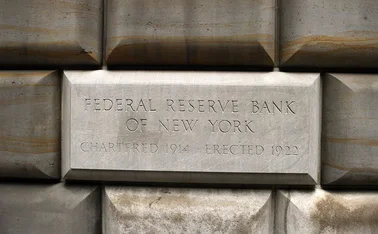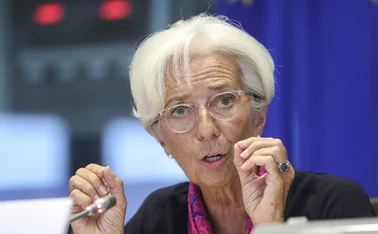
China makes strong start on economic transition
Examining the forward momentum towards financial deepening and markets reform

Last year was a complicated and volatile one for the global economy. In China, economic headwinds helped forge consensus on the need to promote structural reforms, which are rebalancing the relationship between the government and the market. There is a need to deepen financial reforms and improve financial stability while boosting financial sector competitiveness. Some important progress was made in the past year.
Deposit insurance
On May 1, 2015, the State Council launched its Deposit Insurance Regulation, which guarantees deposits of up to 500,000 yuan, thus fully covering 99.63% of depositors, including enterprises. The deposit insurance scheme is an essential reinforcement of China's existing financial safety nets that will further stabilise the country's banking sector. It will boost the incentives for long-term saving and strengthen small- and medium-sized banks. The deposit insurance scheme lays the foundation for a competitive and sustainable financial system.
Renminbi reform
In August 2015, the People's Bank of China (PBoC) changed the way it determines the exchange rate of the renminbi, giving market forces greater influence over where it sets the daily midpoint rate – the rate it gives to the China Foreign Exchange Trade System before the opening of the interbank foreign exchange market on each working day. This marked a milestone in renminbi exchange rate reform during the past decade. However, in response to the market reaction that followed, the government adjusted the exchange rate, so that it can return to a reasonable and balanced level. This will allow it to serve as a reliable benchmark in future. The renminbi exchange rate formation mechanism (the midpoint rate determination mechanism) was overhauled and the International Monetary Fund's (IMF) Special Data Dissemination Standard was adopted.
In addition, several measures designed to further liberalise the renminbi have been announced. The foreign exchange and interbank bond markets are now open to foreign financial institutions, including central banks. The Ministry of Finance has been issuing three-month Treasury bills on a weekly basis since October, thereby strengthening the yield curve. And the first phase of the Cross-border Interbank Payments System (CIPS) was launched in October 2015. CIPS allows processing of cross-border renminbi transactions and supports the settlement of cross-border trades of commodities and services, cross-border direct investment, cross-border financing and cross-border remittance business for individuals. It simplifies settlement and safeguards renminbi internationalisation.
Relaxing interest rate regulation helps optimise resource allocation, directing financial resources towards those sectors and enterprises truly in need of capital
Zhang Hongli, IFF Academic Committee
The measures mentioned paved the way for the renminbi's successful inclusion in the IMF's Special Drawing Rights (SDR) basket announced on November 30, 2015. The RMB is weighted 10.92% and the new basket will be launched on October 1. SDR inclusion is not only an important step towards renminbi internationalisation, but a testament to China's role at the centre of global economic and financial governance. There had been four currencies that made up the SDR basket for the past few decades, which represented the four most powerful economies in the world. The fact the renminbi joins as the fifth reserve currency represents the IMF's recognition of China's economic and financial system, and acknowledgement of the free use and internationalisation of the renminbi.
Interest rate liberalisation
To allow the market to play a decisive role in allocating financial resources, the PBoC, with the approval of the State Council, decided to remove the upper limit on deposit rates charged by commercial banks and rural cooperative financial institutions on October 24, 2015. Thus, a key step was made towards interest rate liberalisation, manifesting China's determination to implement its reform agenda.
First, relaxing interest rate regulation helps optimise resource allocation, directing financial resources towards those sectors and enterprises truly in need of capital. It allows the market to play a vital role and should help to ensure healthy and sustainable economic development.
 Zhang Hongli
Zhang Hongli
Second, relaxing control on interest rates instills fresh momentum in promoting the transformative development of financial institutions. With the upper limit on deposit rates removed, the traditional business model of financial institutions following the concept of ‘scale is profit' is no longer sustainable. This helps financial institutions to adopt a business concept that is profit-centered, accelerate the transformation of their business models, improve the interest rate determination mechanism, enhance the capacity of independent pricing, implement differential pricing, satisfy increasingly diversified financial needs and truly enhance the quality of financial services.
Third, relaxing control on interest rates creates favourable conditions for the transformation of the monetary policy framework, allowing authorities to gradually switch from quantity-based to price-based monetary policy regulation. Strengthening price control is inevitable to improve the efficiency of macro control, and easing control on interest rates is an important prerequisite to achieving such a transformation.
The PBoC has also released a paper on the roadmap for developing an interest rate corridor. According to the paper, the central bank could stabilise market interest rates through range management and expectations guidance. With the formation of market-based benchmark interest rates and improvement of the transmission mechanism, the PBoC's role in determining benchmark lending and deposit rates may be gradually reduced or even removed.
Policy-based finance
China has stepped up structural reform efforts and accelerated the implementation of innovation-driven strategies. Other major strategies, such as achieving the Belt and Road initiative and the Beijing-Tianjin-Hebei regional development, need substantial investment. Development-oriented and policy-backed finance is crucial.
In April 2015, the State Council approved a reform plan laid out by China Development Bank, the Export-Import Bank of China and the Agricultural Development Bank of China. The plan specifies the core functions and roles of these three policy banks and requires them to establish and strengthen a capital restraint mechanism.
Specifically, the China Development Bank should adhere to its role as a development-oriented financial institution; the Export-Import Bank of China should strengthen its role as a policy-backed financial institution; and the Agricultural Development Bank of China should focus on policy-based mandates and transform itself into a sustainable agricultural policy bank. As $48 billion and $45 billion of foreign exchange reserves were injected into the China Development Bank and the Export-Import Bank of China respectively in July 2015, the work of capital replenishment required by the reform plans was successfully completed.
Meanwhile, reform plans on the scope of business, the improvement of governance structures and statute amendment of the three banks are in progress. Such reforms will improve the capital strengths and risk resistance capacity of the banks; strengthen their functions and the roles of policy-backed and development-oriented finance in supporting underdeveloped and key sectors; and help to ensure steady growth, make structural adjustments, bring benefits to people and promote a healthy and sustainable economic and social development.
Regulated internet finance sector
As China's development model is changing and technological advances are making themselves felt in finance, China's financial sector is undergoing a transformation. Regulators and supervisors must adapt. In July 2015, the PBoC – together with 10 ministries, departments and agencies of the Chinese government – jointly published the Guiding Opinions on Promoting the Healthy Development of Internet Finance (the ‘guiding opinions'), an important step that led the internet finance sector into a new stage of law-based regulated development.
China made important progress in 2015, with reform measures being implemented at different levels of government and dividends constantly manifested
Zhang Hongli, IFF Academic Committee
Centering on five principles – "legal-based regulation, proportional regulation, classified regulation, coordinated regulation and innovative regulation" – the guiding opinions specify the regulatory responsibilities of different authorities in major types of internet finance businesses, including internet payment, online lending, equity crowdfunding, online sales of investment funds, internet insurance, internet trust funds and internet consumer finance. The guiding opinions represent a new starting point for developing internet finance in China, securing regulated development of this sector.
Regional financial reforms
In December, the State Council decided to pilot several financial reform and innovation projects in selected regions. The purpose is to allow for further accumulation of experience, with the aim to deepen financial reforms and improve the capacity to serve the real economy.
For instance, a rural finance pilot zone in the Jilin Province focuses on defusing risks associated with the scale operation in modern agriculture and exploring new ways of making good use of rural property rights. Meanwhile, the Guangdong free-trade zone facilitates investments and cooperation between the Guangdong Province and Hong Kong and Macau, and the Fujian free-trade zone focuses on the financial cooperation across the Taiwan Strait. The Tianjin free-trade zone, moreover, focuses on development of the financial leasing industry, providing support for the ‘going out' strategy of the large equipment industry.
The PBoC is also piloting the expansion of cross-border use of the renminbi, as well as investment and financing activities.
Deposit reserves assessment
To further improve the deposit reserves system, provide more flexibility to financial institutions in managing their liquidity and smooth money market volatility, the PBoC implemented a new method of calculating bank deposit reserve ratios in September 2015. Under the new average assessment method, financial institutions calculate the average value of their daily final balance of the deposit reserve over a reporting period and its ratio to the reserve assessment base, to ensure such ratio is not lower than the statutory deposit reserve ratio. To promote the stable operation of financial institutions, a daily lower bound is set in the deposit reserves assessment. At the end of each working day during the reporting period, financial institutions should calculate the quotient of the daily balance of the deposit reserves and the PBoC's assessment benchmark coefficient. The quotient should remain no more than 1% below the required reserve ratio.
Switching the method (from the ‘time-point method' to the ‘average method') of calculating bank deposit reserve ratios can lower the amount of required reserves financial institutions must hold to deal with emergency situations and can serve as an important buffer mechanism for financial institutions. During the assessment period, the deposit reserves of financial institutions can be lower than the statutorily required amount at some point of the time, providing the average amount during the period meets the statutory requirement. In this way, financial institutions will have more flexibility in managing liquidity, which mitigates money market volatility, improving the monetary policy transmission mechanism and creating favourable conditions for transforming the monetary policy framework.
The year 2015 was the last of the Twelfth Five-Year Plan and was a key reform year for financial deepening. At the eighth meeting of the central leading group for deepening overall reform, President Xi Jinping, emphasised that improving the quality, rather than the pace, of reforms should be prioritised. President Xi also pointed out that the authorities should strengthen the momentum and synergy of reforms, reinforce the responsibilities of different departments and raise awareness of the general situation and urgency, so that the reforms of many key sectors can be driven by the reform of government itself.
With such guidance, China made important progress in 2015, with reform measures being implemented at different levels of government and dividends constantly manifested, helping to ensure the successful structural transition of the Chinese economy.
A roller-coaster ride for equities
The first seven months of 2015 witnessed major fluctuations in China's A-share market. The Shanghai Composite Index began its round of upward movement in February 2015 and soon gathered speedy momentum with the accelerated influx of off-market liquidity and leveraged funds. On June 12, 2015, the composite index hit it's a record recent high of 5,178.19 points. The ensuing stock market crash now appeared inevitable given the huge bubble created by large capital inflows, especially by leveraged funds. The fall was also exacerbated by market participants being able to short stocks.
The China Securities Regulatory Commission introduced corrective measures during the market swings last year and ultimately the authorities successfully prevented the situation from escalating into a systematic issue, creating a window of opportunity for the market to recover and develop. Such action conforms to the reform objective of "making the market play a decisive role in resource allocation and letting the government improve its role", which was announced at the Third Plenary Session of the 18th CPC Central Committee. Some temporary measures were withdrawn after the market began its self-recovery and development. One of the main causes to the stock market turbulence is the underdeveloped capital market in China, which is manifested in its flawed trading mechanism, imperfect market system, inexperienced traders and mismatched regulations.
As such, China will accelerate its reform and transform its governmental functions while comprehensively strengthening supervision to promote sustainable and sound development of the capital market. Persevering with ‘marketlisation' and ‘legalisation' represents the two foundations governing the development of China's capital market. Regulators, however, must still step in with action in the event of a complete or repeated market failure.
Broken circuits
China introduced circuit-breakers at the beginning of 2016 to prevent huge volatility in the stock market. Aimed at helping the market to ‘cool down', circuit-breakers are intended to prevent or reduce hasty decision-making during turbulent market and dampen down programme trading. But they failed to yield the desired results when implemented on two occasions, instead causing a ‘magnet effect', with some investors rushing to trade before halts occurred. This exacerbated the situation, forcing the CSRC to suspend the mechanism. The implementation of circuit-breakers will be explored gradually by regulators to have a fined tuned version of the mechanism ready as and when needed. But their use is less likely while China's stock market continues to be dominated by medium and small-sized investors.
IPO system
The creation of a registration-based IPO system is an important task in the State Council's top-level design for a sustainable and sound capital market, but it should not be implemented on its own. Improving the multi-layered capital market system, promoting reform toward a registration-based IPO system and facilitating equity financing through diverse channels should move forward hand-in-hand and reinforce one another.
The development and regulation of internet finance
Yao Yudong examines how China can deliver on its promise to push toward mass entrepreneurship and innovation
With the rapid development of new information technologies such as cloud computing, Big Data, the Internet of Things and ‘block chain' that make us ever more connected, human beings are gradually migrating from physical space to cyberspace.
This migration is driven by three overarching trends. First, we are witnessing an upsurge of ‘makers' in mass entrepreneurship and innovation. The cost of starting an enterprise online is very low. Huge investments into fixed assets are no longer a prerequisite for success – just look at the explosion in e-commerce startups during the past few years. We may, as a result, in fact witness the decline of private equity firms and portfolio companies in the future.
Second, the potentially unlimited provision of goods in cyberspace is lowering marginal costs, which benefits consumers by driving down prices.
Third, new types of fintech businesses such as crowd funding and peer-to-peer lending are disrupting traditional models of intermediation, replacing them with direct and automatic matching.
At the Third Plenary Session of the 18th Communist Party of China Central Committee, the country called for a push toward mass entrepreneurship and innovation. How can China meet this objective? In short, through legal reforms.
According to Chinese law, a company can have at most 200 shareholders. That number should be expanded. The shareholder base of online platforms and tech companies typically numbers in the thousands. China needs to consider increasing the maximum number of shareholders from 200 to 1,000 – similar to US rules.
Commercial banking and securities laws should also be revised. Commercial banks in China are currently prohibited from investing in non-banking financial institutions or enterprises. This setup should be reviewed to ensure traditional lenders adapt to new ways of doing things – effectively enabling the proverbial ‘elephants' to ‘dance'.
In addition, revision of securities laws should aim to guarantee the quality of listed companies and discourage competition among the main board, second board and new third board markets. It should also ensure effective supervision of firms.
In 2015, the People's Bank of China (PBoC), together with 10 government ministries, departments, and agencies, issued the Guiding Opinions on Promoting the Healthy Development of Internet Finance, which is designed to strike a balance between financial innovation and risk. In addition, the ‘One Bank and Three Commissions' group – comprised of the PBoC, the China Securities Regulatory Commission, the China Insurance Regulatory Commission and the China Banking Regulatory Commission – is drawing up rules on the administration of internet payment services and equity crowd funding.
In addition, capital pools should be banned to avoid risks of maturity mismatches and explicit, implicit guarantees should be prohibited since they are likely to incentivise excessive risk-taking and bad debts down the road. Guaranteeing highly risky crowd-funding projects underpinned by little or no capital is bound to lead to a variety of problems.
Yao Yudong is an IFF Academic Committee member and director general of the Research Institute of Finance and Banking, People's Bank of China
Prospects for a green financial system
Ma Jun explains the growing urgency for China to transition to a green financial system
Prospects for the environment in China are looking increasingly grim, so China's economic development needs to be transformed into a green and sustainable model, to underpin this transition. China needs to set up a green financial system as soon as possible to channel social capital into green projects that maximise social welfare. So far, although achievements have been made in directing green credit, efforts to build a green financial system are fragmented and many studies are still limited to concepts.
The so-called green financial system refers to a series of policies, institutional arrangements and relevant infrastructure projects that support social capital investment to green industries, including environmental protection, energy saving, clean energy and clean transportation, through financial services such as loans, private equity investment, bonds, stock issuance, insurance and emissions trading.
Building a green financial system in China can help to stabilise the economy in various ways. First, it nurtures new growth points and boosts economic growth potential. Second, it helps accelerate the green transformation of industry, energy and transportation structures and enhances the technological component of China's economy. Third, it alleviates government financial pressures caused by environmental problems. Fourth, it facilitates China's efforts to be recognised as a responsible powerhouse in the international arena.
At the current stage, China needs to channel more social capital into green industries. This can be done by increasing returns on investment in green projects, lowering returns on investment in pollution-intensive projects, enhancing enterprises' sense of social responsibility to boost green investment, and raising awareness of environmental protection and green consumption among consumers. If these policies can produce the same effects at the lowest price, they are optimal.
Based on China's current situation, one can propose some initial suggestions on building a green financial system in the country. In total, 14 suggestions are proposed and can be categorised into four types: institutional construction; policy support; financial infrastructure; and legal infrastructure. This classification helps to specify government agencies and market players' responsibilities for implementing each suggestion.
The first category, institutional construction, provides organisational support for green investments. It calls for the contribution of central and local government funds and relevant system reform, including building a green banking system and green industrial funds. Institutions that could offer this support include the Silk Road Fund, the Asian Infrastructure Investment Bank, the New Development Bank and other outbound investment and development institutions.
The second category concerns fiscal and financial policies, requiring assistance and impetus from bodies including the Ministry of Finance, the People's Bank of China (PBoC), the China Banking Regulatory Commission (CBRC) and the China Banking Securities Commission (CSRC) to create an efficient fiscal discounting mechanism for green loans. The National Development and Reform Commission, the PBoC, the CBRC, the CSRC and other departments issue guidelines on green bonds to permit and encourage banks and enterprises to issue green bonds. It is also necessary to promote the stock market's support for green enterprises.
The third category is financial infrastructure construction that supports green investment. This can be led by private financial institutions, encouraged and supported by the government and public sectors by accelerating the construction of an emissions trading market. One way is to build a green rating system, push forward the development and application of green stock indices, set up an environmental cost calculation system and databases under the leadership of the Ministry of Environmental Protection and financial societies (or associations), and construct a green investor network.
The fourth category relates to the construction of a legal system conducive to green finance. It calls for assistance and impetus from the legislative body, relevant ministries and commissions, and financial institutions. It includes exercising forced green insurance in more fields and specifying banks' legal obligations for the environment. In addition, the CSRC and stock exchanges should establish a mandatory environmental information disclosure mechanism for listed companies so as to provide a basis for environmental risk assessment and accurate valuation on listed companies.
Ma Jun is chief economist in the research bureau, People's Bank of China
Only users who have a paid subscription or are part of a corporate subscription are able to print or copy content.
To access these options, along with all other subscription benefits, please contact info@centralbanking.com or view our subscription options here: subscriptions.centralbanking.com/subscribe
You are currently unable to print this content. Please contact info@centralbanking.com to find out more.
You are currently unable to copy this content. Please contact info@centralbanking.com to find out more.
Copyright Infopro Digital Limited. All rights reserved.
As outlined in our terms and conditions, https://www.infopro-digital.com/terms-and-conditions/subscriptions/ (point 2.4), printing is limited to a single copy.
If you would like to purchase additional rights please email info@centralbanking.com test test test
Copyright Infopro Digital Limited. All rights reserved.
You may share this content using our article tools. As outlined in our terms and conditions, https://www.infopro-digital.com/terms-and-conditions/subscriptions/ (clause 2.4), an Authorised User may only make one copy of the materials for their own personal use. You must also comply with the restrictions in clause 2.5.
If you would like to purchase additional rights please email info@centralbanking.com test test test








